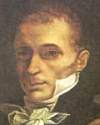
On 17 Feb 1781, René Laënnec was born, a French physician who invented the use of a wooden cyclinder as an instrument for medical diagnosis, the nature of which is a question in the quiz below.
For a breezily written background to his life, read this article on René Laënnec. Therein you will be aware of the activities of his contemporaries, and how the French Revolution occurred during his youth.

On 17 Feb 1781, René Laënnec was born, a French physician who is generally considered the father of chest medicine. Using a foot-long wooden cylinder that he placed on the chests of his patients, he was able to hear the various sounds made by the lungs and heart. Today's book pick is: Doctors: The Illustrated History of Medical Pioneers, by Sherwin B. Nuland, a surgeon and National Book Award-winner. This book tells the extraordinary story of the development of modern medicine through compelling studies of the great innovators and pioneers. Artfully selected illustrations bring the history of medicine to life as never before.
This brilliant collection of life portraits of physician-scientists shows how their deeds and determination paved the way for future breakthroughs in medicine.
Ranging from the legendary father of medicine, Hippocrates, to Helen Taussig, the founder of pediatric cardiology, the book is filled with the spirit of ideas and the thrill of discovery. Other medical pioneers profiled include Galen, Andreas Vesalius, Ambroise Paré, William Harvey, Giovanni Morgagni, John Hunter, René Laennec, Ignac Semmelweis, Rudolf Virchow, Joseph Lister, and William Stewart Halsted.
It is available from Amazon, typically about New from $21.99. Used from $4.99. (As of earlier time of writing - subject to change.)
 | Natural selection is a mechanism for generating an exceedingly high degree of improbability. |
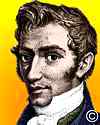 | Whether statistics be an art or a science... or a scientific art, we concern ourselves little. It is the basis of social and political dynamics, and affords the only secure ground on which the truth or falsehood of the theories and hypotheses of that complicated science can be brought to the test. |
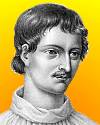 | The universe is then one, infinite, immobile. ... It is not capable of comprehension and therefore is endless and limitless, and to that extent infinite and indeterminable, and consequently immobile. |
| Before you look at today's web page, see if you can answer some of these questions about the events that happened on this day. Some of the names are very familiar. Others will likely stump you. Tickle your curiosity with these questions, then check your answers on today's web page. | |
| Births | |
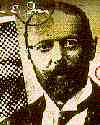 | Frederic Eugene Ives, born 17 Feb 1856, was an American photographer and inventor of a process to reproduce photographs on a printing press. Prior to this process, illustrations were reproduced from hand-engraved plates. In this way printers could reproduce line drawings but not the shades of gray in a photograph. What process did Ives invent to print photographs? |
 | René Laënnec, born 17 Feb 1781, was a French physician who invented the use of a foot-long wooden cylinder for medical diagnosis. By what name is the modern version of this instrument known? |
| Deaths | |
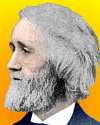 | Christopher Latham Sholes (1819-1890) was a U.S. inventor who developed the typewriter. A printer and newspaper editor by trade, he developed a page numbering machine in the mid-1800s. A friend suggested he modify the machine into a letter-printing device. Sholes patented the typewriter in 1868 and sold the rights to a manufacturer in 1873. Which well-known typewriter manufacturer bought the rights to Sholes’ typewriter? |
| Events | |
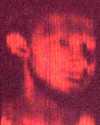 | On 17 Feb of a certain year, the first public experimental demonstration of Baird colour television was transmitted from Crystal Palace to the Dominion Theatre, London. In which decade was this TV broadcast made? |
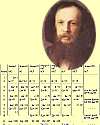 | On 17 Feb 1869, a scientist cancelled a planned visit to a factory and stayed at home working on the problem of how to arrange the chemical elements in a systematic way. To begin, he wrote each element and its chief properties on a separate card and arranged these in various patterns. Eventually he achieved a layout that suited him and copied it down on paper. These historic documents still exist, and mark the beginning of the form of the Periodic Table as commonly used today. Can you name this scientist? |
Fast answers for the previous newsletter for February 16: ecology • fingerprints • so-called “weak” interactions • the imitation by a species of other life forms or inanimate objects, giving protection to a harmless organism by resembling another noxious or dangerous life form predators avoid • decade including the year 1937 • King Tutankhamen.
 If you enjoy this newsletter, the website, or wish to offer encouragement or ideas, please send feedback by using your mail reader Reply button.
If you enjoy this newsletter, the website, or wish to offer encouragement or ideas, please send feedback by using your mail reader Reply button. Your click on a Facebook, StumbleUpon, or other social button on the site webpages is also a welcome sign of appreciation. Thank you for using them.
© This newsletter is copyright 2020 by todayinsci.com. Please respect the Webmaster's wishes and do not put copies online of the Newsletter — or any Today in Science History webpage. (If you already have done so, please remove them. Thank you.) Offline use in education is encouraged such as a printout on a bulletin board, or projected for classroom viewing. Online, descriptive links to our pages are welcomed, as these will provide a reader with the most recent revisions, additions and/or corrections of a webpage. For any other copyright questions, please contact the Webmaster by using your mail reader Reply button.
--
If you do not want to receive any more newsletters, Unsubscribe
To update your preferences and to unsubscribe visit this link
Executive Real Estate Business Class
-
"It was like a man with wings. It wasn't like anything you'd see on TV or in a monster movie." ...
About the publisher
Search This Blog
Blog Archive
-
▼
2021
(585)
-
▼
February
(72)
- Mary Seacole | The Spitfire | George Washington
- On This Day for February 28 - Olof Palme assassina...
- On This Day for February 27 - Chile struck by eart...
- On This Day for February 26 - Napoleon's escape fr...
- On This Day for February 25 - Ousting of Marcos in...
- Demystified: How Do Penguins Tell Each Other Apart?
- On This Day for February 24 - U.S. President Andre...
- On This Day for February 23 - Alamo besieged by Sa...
- On This Day for February 22 - Cloning of Dolly, Ge...
- Your essential guide to the Tudors | LGBT+ history...
- On This Day for February 21 - Malcolm X assassinat...
- On This Day in History by OnThisDay.com: You are n...
- February 21: The 1st Romanov Tsar, the 1st Locomot...
- On This Day for February 20 - John Glenn's orbit o...
- On This Day for February 19 - Iwo Jima invaded by ...
- 🎉 Ready for 30% Off Kids' Memberships?
- On This Day for February 18 - Pluto discovered by ...
- Newsletter for Thursday 18 February.
- Demystified: Why Does Salt Melt Ice?
- On This Day for February 17 - Vietnam invaded by C...
- Newsletter for Wednesday 17 February.
- On This Day for February 16 - Power in Cuba seized...
- Newsletter for Tuesday 16 February.
- On This Day for February 15 - USS Maine destroyed,...
- Newsletter for Monday 15 February.
- February 15: The King of Persia, the Human Genome ...
- Who was Saint Valentine?
- On This Day for February 14 - Fatwa issued against...
- Newsletter for Sunday 14 February.
- February 14: Battle of Cape St Vincent, the Teleph...
- On This Day for February 13 - William and Mary cro...
- Newsletter for Saturday 13 February.
- February 13: Baghdad falls to the Mongols, the Bil...
- On This Day for February 12 - Chile's independence...
- Newsletter for Friday 12 February.
- February 12: The Qing Dynasty Ends, The Senate Acq...
- Demystified: Why Do We Say “A Pair of Pants”?
- On This Day for February 11 - St. Bernadette's fir...
- Newsletter for Thursday 11 February.
- February 11: Margaret Thatcher's Rise to Power, Ne...
- Watch ‘Tuskegee Airmen: Legacy of Courage’
- 🇺🇸💰Your Presidents' Day Exclusive Bonus!
- On This Day for February 10 - Kasparov-versus-comp...
- Newsletter for Wednesday 10 February.
- February 10: End of the French-Indian War, HMS Dre...
- All-New Tonight: 'The Food That Built America' Sne...
- On This Day for February 9 - Calcutta restored to ...
- Newsletter for Tuesday 9 February.
- February 9: Massachusetts Rebels, the Battle of Gu...
- On This Day for February 8 - Mary, Queen of Scots,...
- Newsletter for Monday 8 February.
- February 8: Mary Stuart is Decapitated, Napoleon L...
- What did Mary Tudor think of Anne Boleyn and her o...
- On This Day for February 7 - British Invasion laun...
- Newsletter for Sunday 7 February.
- February 7: The 1st English Prince of Wales, the M...
- Newsletter for Saturday 6 February.
- On This Day for February 6 - Accession of Elizabet...
- February 6: Maximilian I and Elizabeth II Ascend t...
- Black History Month: The Tuskegee Airmen Documenta...
- On This Day for February 5 - Punic Wars ended, Han...
- February 5: Congo Taken as a Personal Possession a...
- On This Day for February 4 - Yalta Conference open...
- February 4: The Chinese Song Dynasty, World's Olde...
- Serving Up an All-New Season
- On This Day for February 3 - Fifteenth Amendment t...
- February 3: The Naval Battle of Diu, Universal Suf...
- On This Day for February 2 - Ban on African Nation...
- February 2: New Amsterdam Grows Up, the US Pays Me...
- On This Day for February 1 - Space shuttle Columbi...
- Newsletter for Monday 1 February.
- February 1: Black History Month Starts and a Day o...
-
▼
February
(72)
-
Blogroll
-
About
HistoryFact










0 comments:
Post a Comment